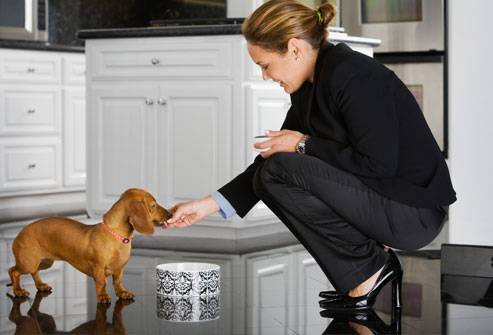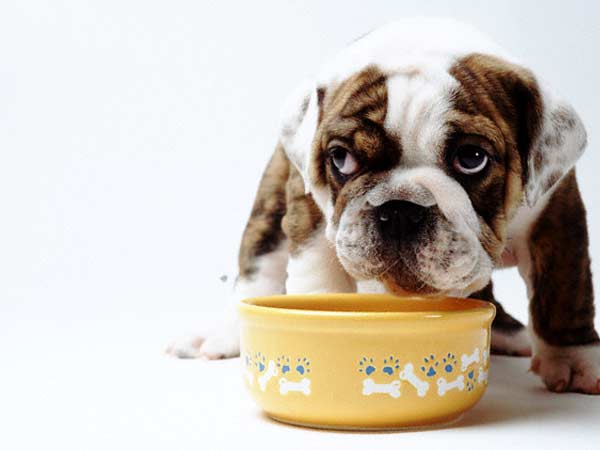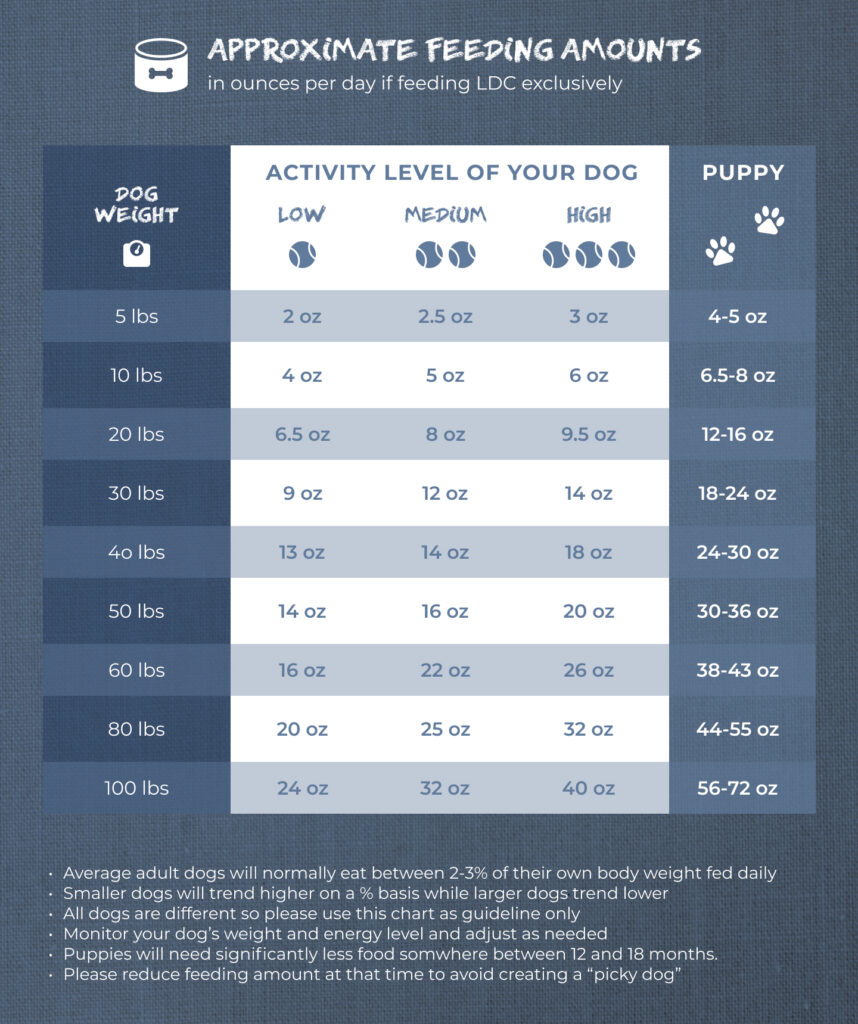Natural Homemade Dog Food
Lucky Dog Cuisine is a completely cooked product but we recommend heating the food prior to serving. Never heat LDC in the plastic bag. Always remove it from the bag prior to heating.
When starting any new food, introduce it slowly. If you are transitioning from dry to moist, this is particularly important. The different consistency can be a challenge for your dog’s digestive system.
Start by replacing a quarter of your existing food with LDC. Do this for 2 days then over the next few days, add more of the new food. It should take about 7 days of gradual transition to completely and properly introduce a Lucky Dog diet.
Please remember that LDC can be served with your existing food.
It would be preferable to serve an exclusive diet of Lucky Dog Cuisine, some whole foods in your dog’s diet are far better than none. Therefore, mixing LDC with your existing food is perfectly acceptable.

Make sure you know how to feed your dog properly!
Please remember to never heat Lucky Dog Cuisine in the plastic packaging it arrives in.
Homemade Dog Food Serving Sizes
There is no magic formula as to how much you should feed your dog. All dogs are different. 2 identical dogs from the same litter may require different amounts of food based on lifestyle and activity levels. As a very rough guide you may wish to feed your dog about 2-3% of their body weight daily. For example, a 50 lb dog would then get 24 oz of food per day, ideally fed half (12 oz) in the morning and night.
Puppies require more calories than adult dogs while they are growing. Puppies need to eat approximately 5-6% of their bodyweight per day, divided into 3 meals instead of 2. We also recommend feeding your young puppy only 1 protein as their bodies continue to develop. Our Turkey and Rice and Turkey N’Taters recipes are perfect for them.
Most dogs will eat LDC enthusiastically. Any food that is eaten quickly can cause vomiting, that’s why smaller portions twice daily may be more effective. Loose or soft stools at the beginning of any new food introduction is normal. Over time, you should see consistent, well-formed stools.
Part of any good feeding system is the ability to maintain a healthy weight. You should be able to run your hands over your dog and feel his ribs. There should be a definition around his ‘waist’. Weigh your dog at the start of a new feeding system and check his progress. How much to feed depends on many factors including: age, gender, metabolic rate, breed, time of year and activity level.

“Please, sir, can I have some more?”

